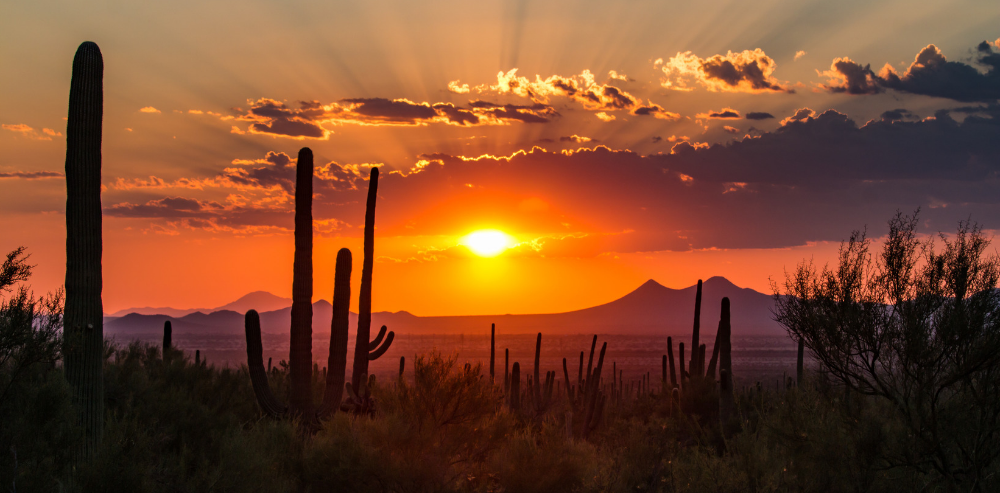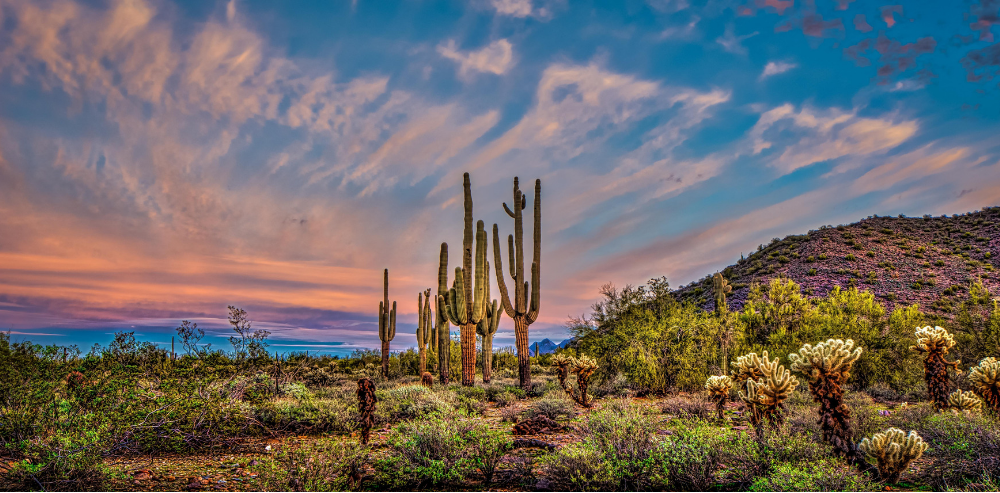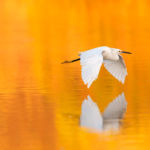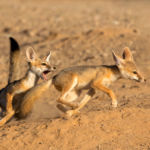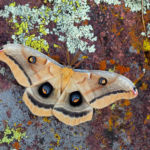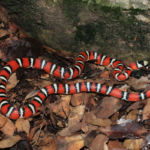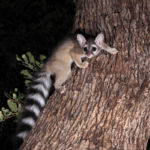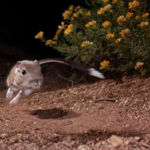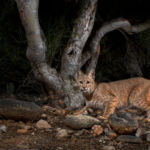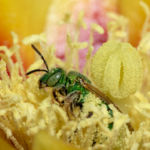Capturing the Splendor of Arizona: Revealing the Rich Bounty of Her Natural Wonders Through Photography
She looked out of her window. How blue the sky. The mountain peaks stood up like dark spears. Patches of snow shone in the sunlight, running down to the edge of the vast green belt of forest land…Arizona! There was no place in the world so full of romance and beauty, and the natural things that stirred the soul. ~ Zane Grey, The Water Hole, 1928
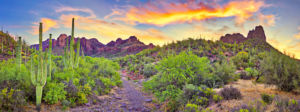
Arizona Sonoran Desert
The magic of Arizona’s legendary allure begins with the land, and what a diverse land it is! From forests and desert, to grasslands and woodlands, Arizona offers panoramic beauty and spellbinding scenes nearly defying description, from every corner of the state.
As the third most bio-diverse state in the country, Arizona is unique in that there are six distinct biomes (geographical areas that have a specific climate, plant life and animals) featuring hundreds of native species of flora and fauna – some found nowhere else in the world. From the tundra biome at the top of Mt. Humphreys in Flagstaff, down to the desert scrub biome near Yuma, the beauty of our scenic vistas and the animals that thrive in our state have long been the subjects of award-winning photographers from across the globe.
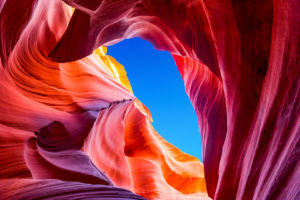
Antelope Canyon
Photographers have been snapping Arizona’s notorious grandeur since the invention of the camera. Capturing an image, truly freezing a moment into timelessness, exposes not only the bare truth of the scene but it also has the ability to convey a feeling, evoke emotions and even proffer to us a sense of our place in this world. Perhaps that’s why images of Arizona continue to fascinate us.
With a PhD in wildlife management and a lifelong nature lover, Bruce Taubert began photographing Arizona wildlife over 30 years ago. “Many of the animals I capture on film would never be seen by the average person. I want my photography to be the conduit that brings awareness and appreciation of the animals that make the Sonoran Desert their home. By showing the beauty and sharing the qualities of these creatures in photographs, I hope to motivate the public to better understand and even cherish our wildlife,” he says.
Taubert’s work has been published in magazines such as Arizona Highways, Game & Fish, Conservation International, Science and others. He’s authored two instructional manuals geared for both budding and accomplished photographers, and he serves as an instructor for photography seminars and workshops.
When asked just what makes Arizona so photogenic, Taubert explains that the raw, natural beauty and abundance of verdant plant life combine to create a distinct aesthetic found nowhere else in the world.
“Arizona is so unique. The opposite of what some people associate with a desert – that of dry, barren landscapes of shifting sands – the Sonoran Desert is the most diverse in the world. The combination of so many vertical structures such as towering saguaros, mesquite trees and mountains; the contrasting warm colors of the desert and the vast, openness of the landscape allows for stunning photography.
“Sometimes, I feel that people are afraid of the desert,” he says. “With thoughts of rattlesnakes, scorpions, prickly cacti and howling coyotes, there can be a misunderstanding about how lush and teeming with beautiful life the desert actually is. Because so many animals in the desert are nocturnal, people wouldn’t see them if it weren’t for images captured by photographers.”
With an arsenal of cameras and equipment to choose from, Taubert channels his deep-rooted love for wildlife into his work; creating dramatic, dazzling and even downright jaw-dropping images of his subjects.
Taubert’s favorite time to capture the animals in his images is what’s known in the photography world as the “golden hours”: 15 to 20 minutes before sunrise to two hours after, and one and a half hours before and up to sunset. “The lighting those times of day allows me to pick up the yellows, golds and reds. The warm light in those “golden hours” lends a softness and richness to the images, whereas midday lighting tends to be harsh and angular, throwing shadows and washing out color.”
Wildlife is most active in the early morning and at night. “When I set out to photograph a particular animal, I’ll research that animal’s behavior to determine the best time and place to find it,” he says. Taubert takes a lot of his wildlife images in the dark of night – precisely when most of us would never take the opportunity to observe these desert creatures.
Taubert’s latest photographic passion is really, shall we say, in the details. Macro photography, otherwise known as extreme close-up photography, shows the size of the subject much greater than life-sized. From the elaborate and intricate patterns on a moth’s wing, to the mind-blowing detail of a fly’s multi-lensed eyes, macro photography offers viewers a glimpse into a tiny world we wouldn’t otherwise be privy to.
“I find the details of a flower, or the complexities of a bee’s eyes absolutely fascinating,” Taubert enthuses. “Just think, without seeing these wonders of nature in photographs, there is so much of the world that we’ll never be able to appreciate because we can’t see it.”
For macro photography enthusiasts, Arizona happens to be one of the best places in North America to shoot. With the sheer number of insects and invertebrates that inhabit the state, and a warm climate that allows photographers to find their subjects year-round, the desert southwest is teeming with life and photographic opportunities.
While residents and visitors to Arizona may have the opportunity to appreciate her visual gifts firsthand, the breathtaking images captured on film reveal the richness and vibrancy of life here to any viewer fortunate enough to visually drink in all that is Arizona.
- Photo by Bruce Taubert
- Photo by Bruce Taubert
- Photo by Bruce Taubert
- Photo by Bruce Taubert
- Photo by Bruce Taubert
- Photo by Bruce Taubert
- Photo by Bruce Taubert
- Photo by Bruce Taubert
- Photo by Bruce Taubert
Learn from the Pro:
Bruce Taubert shares his tips and strategies for taking great photographs
- Become comfortable with your camera equipment. Your camera can always take a photograph, but you make the great photographs by knowing how to use it. Most modern cameras are rather complicated pieces of equipment. Make sure you know how to set the white balance, focusing points, image quality, exposure compensation, and the like. You can learn about your camera’s advanced operations from the user’s manual, the internet, or from an instructor.
- Research your subject. I am a biologist who knows a lot about animals, but I still spend more time investigating the habits of my subjects than I do in taking their images. The more you know about your subject, the better able you are to get up-close and personal with them.
- Scout. Even before you shoot anything, go to the photo location to determine the quality of the light, best angles to shoot, wildlife movement patterns, and anything else that will give you the best possible opportunity to take a great image. On the day of the shoot, plan to get there early and stay late. Although most animals have predictable movement patterns, you’ll find that the longer you stay, your chances of taking a rewarding image increase.
- Be there for the right light. The great photographers search for the best light and think as much about lighting as they think about their subjects. For the most part, early morning or late afternoon provides the best light – but always be prepared to capture a great image any time of the day or night. I love photographing in the dark of night when the light is mine to make.
- Use the internet. I normally read every photography book I can get my hands on, but I also spend considerable time on the internet. The internet allows me access to photographers that will never write a book but will spend considerable time sharing their knowledge online. Pick their virtual brains but be sure to separate the wheat from the shaft.
- Join a photo club. Looking at other photographers’ images and discussing photography will help you improve. Many photo clubs have field trips, training classes, photo competitions, and numerous social events. I cannot emphasize enough the importance of having other photographers help and mentor you.
- Take advantage of special opportunities. When you have the chance for a great image, take it. Never wait for tomorrow! I spent years searching for a den of kit foxes. When I finally found one, I spent every spare minute I could find to be there and take their photos. I knew I may never find another, so I struck while the iron was hot.
- Practice makes perfect. The more you use your camera, the better photographer you will be. My favorite reading material on an airplane is the camera manual. I photograph my grandchildren, friends’ dogs, birds at the local pond, etc. Remember how much time and effort you put into learning how to drive a car? Now driving your car is second nature. That is what using your camera should become.
- Be patient. Wildlife and landscapes can be unpredictable. The weather is almost never right, the sun is too high, the animal is in the shade, there is some vegetation in the way, or whatever. There are always problems that get in the way of taking great photographs. If you are patient, the weather will get better, the animal will move into the sun, and you will take a photograph to remember!
Ready to Further Hone Your Photographic Skills?
Feeling inspired to get out and shoot? Here are some excellent resources to help you in your own photographic journey.
Books
Photographer Bruce Taubert has authored his comprehensive guide to capturing your own images of Arizona’s fascinating wildlife. Wild in Arizona: Photographing Arizona’s Wildlife, A Guide to When, Where, and How is available in paperback and e-book from many retailers including Amazon.com.
You’ll learn practical photography tips (for novices and experts), the ideal times and locations to photograph, instructional guides on shooting, and how to find and identify wildlife. The beautiful image-rich book is filled with over 200 of his gorgeous photographs, sure to inspire any animal lover to capture these desert creatures for themselves.
Also authored by Bruce Taubert and local Arizona photographer Amy Brooks Horn, is The Art of Macro Photography, available in paperback and downloadable PDF. Within it’s 200+ full-color pages, you’ll learn all about macro photography gear and detailed instruction on capturing stunning images that truly pop off the page. This book is available at Amazon.com, the Arizona Highways Gift Shop in Phoenix or HornDesigns.com
Arizona Highways PhotoScapes Workshops
Presented by Arizona Highways magazine and taught by world-renowned, award-winning professionals; these series of workshops combine technical expertise, off-the-beaten-path locations and thoughtfully detailed itineraries. Participants will receive comprehensive instruction on all aspects of photography – from capture to print – and professional critiques of their work.
With 56 workshops scheduled for 2019, you’re sure to find one (or several) to get your creative juices flowing. Upcoming topics include:
Best of the West | March 26th – April 1st
Havasupai | April 11th – April 15th
Horses & Cowboys |April 26 – April 28th
Chasing Monsoons | July 18th – July 21st
Super Macro Photography | August 24th – August 25th
Seasons of Sedona | October 24th – October 27th
Visit the website AHPS.org for a full schedule of all the workshops offered and more details on the program.

